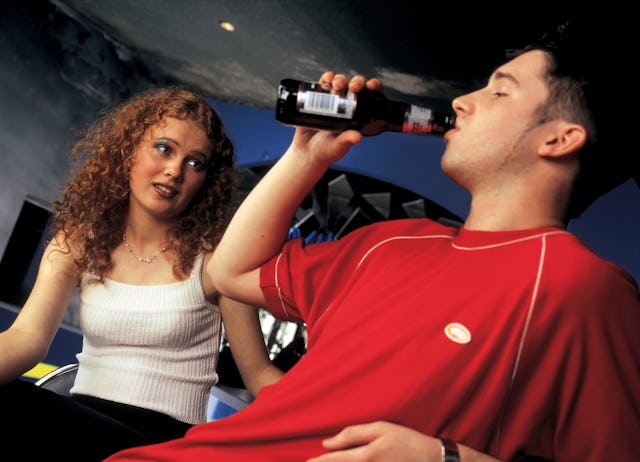Drinking & Cannabis Use Has Declined Since The '90s For Most (But Not All) Teens
Here are the kids who are still at higher risk.

The kids are all right... for the most part. And we know that in part thanks to the Youth Risk Behavior Surveillance System (YRBSS... not exactly a catchy acronym, to be honest). This CDC initiative has monitored adolescent health behavior changes over time since 1991 through a series of surveys given to high school students. We currently have about 32 years of data from more than 250,000 kids to date. We’ve known for some time that, overall, use of alcohol and cannabis is down considerably in this period (more on that in a minute).
But recently researchers at Duke University School of Medicine wanted to see if teens with suicidal thoughts and behaviors (STB) saw declines on par with the average high schooler.
When we say substance use is down, we’re not talking modest numbers for the most part. The survey notes that among US adolescents in 12th grade, past year alcohol use decreased from 73% in 2001 to 46% in 2023, the latest year for which we have data. Binge drinking has also seen significant declines.
And while cannabis use has held relatively steady over time, they are down from a sharp uptick in the mid-90s. This might seem to be damning with faint praise, but remember that cannabis has become far more prevalent in many places in the U.S. due to legalization efforts — so there has not been a corresponding increase in use despite this fact.
But did the same declines occur among teens who’d experienced STB in the past year? Researchers, led by Shayna Cheek and Jeremy Grove, found that while this cohort also saw declines in use of alcohol (including binge drinking), but far less significant declines than their peers who did not experience STB. Moreover, cannabis use in the STB cohort appeared to be largely unchanged from its zenith in the general population in 1995.
The study was published last month in the Journal of Adolescent Health, and offers a hopeful, more informed path forward for teens struggling with suicidal ideation.
“Although the decreasing prevalence of alcohol use, binge drinking, and cannabis use found in this study among adolescents is promising, these results highlight that we cannot generalize these steep, downward trends to all adolescents,” the authors note. “Instead, findings suggest the need for continued screening and assessment of substance misuse among adolescents presenting with STBs, as well as the importance of developing targeted treatments to address these co-occurring concerns.”
So let’s take comfort in the fact that, on the whole, kids are doing better even as we take note that there’s still important work to be done for the most vulnerable among them.